How To Plan An Amazing Trip to Kyoto (Beyond General Japan Travel Tips)
Kyoto is one of our most favorite cities to visit in Japan. Having visited twice and planning our third trip, we’ve put together essential tips directly related to Kyoto to help you plan your visit. I must say those who find Kyoto overcrowded and unbearable probably didn’t do enough research. Certain things if known in advance can be avoided or mitigated for a much better experience. In this post, you will find our best tips and suggestions, drawn from our personal experience.

Don’t Overplan or Overstuff Your Itinerary
Don’t overplan (and I say this as an overplanner). It may be difficult to resist the temptation to pack too many activities into each day, especially if it’s your first visit. However, Kyoto is much larger and more spread out than it may appear on the map and the public transportation system is not always convenient (more about this later). A lot of the major attractions are located in different parts of the city, often far from each other. First-time visitors often underestimate distances between places and commuting time.
Instead, focus on a few (2-3) key attractions each day. Give yourself time to absorb the atmosphere and appreciate the details that make Kyoto special. Leave room for spontaneity so that you can linger at places that particularly captivate you or wander around and discover hidden gems.
For example, we wandered around Gion and decided to enter Kodai-ji and discovered its tranquil bamboo garden. These unplanned moments may become the most memorable parts of your trip. If your itinerary is too rigid, you may constantly feel pressured to move on to the next scheduled activity.
Group Places of Interests into Clusters
One of the most important tips for maximizing your time in Kyoto is to save your places of interest on Google Maps and then group them into clusters based on their locations. Overall, Kyoto can be divided into several key areas, each with its own set of attractions, like Gion, Higashiyama, Arashiyama, the northern part. By grouping nearby attractions together, you can dedicate each day or half-day to exploring a specific area, such as a day to explore Arashiyama and a day to explore Gion.

Additionally, grouping sites by location also helps us in planning our meals as trying local food is an important part of visiting Japan for us. I usually saved several nearby restaurants and cafés within each cluster in advance. I personally dislike wandering around to search for food or scrolling endlessly on the phone when it’s time to eat.
Plan Your Trip As If You Would Come Back
I think the best way to enjoy Kyoto (and perhaps other places in Japan as well) is to plan as if this won’t be your only visit. Let’s be realistic – Kyoto is a city with an overwhelming amount of cultural, historical, and natural attractions, and it’s simply impossible to see everything in one trip.
Rushing through multiple temples in one day and then feel templed out and say they all look the same? That’s not good in my opinion. Instead, spend more time at each location, read a bit to appreciate its beauty, history, and uniqueness.
It’s okay if you don’t get to all the places you want to see and plan to visit. There’s always next time. I put Ryoan-ji in my itinerary for both visits and I still haven’t seen it. I did think we could have stopped by on that day when we went to Kinkaku-ji. But ultimately, it’s no big deal and I actually like the feeling of knowing that there are things to look forward to on my next trip.
This mindset also helps you manage travel fatigue. Visiting Kyoto can be physically demanding due to the extensive walking involved. Expect to walk at least 15,000 steps a day. Relax and take a break as needed.
Visit Popular Sites First Thing in the Morning
Kyoto attracts a significant number of domestic and international tourists throughout the year. There are also a lot of school kids taking school trips at major sites in the city too. As a result, its most famous attractions can become extremely crowded during certain times of the day. So even though this may sound like an old-school tip, it is still one of the best tips for visiting Kyoto.
Generally, most crowds converge at the top 4 or 5 popular sites in Kyoto, namely Kiyomizu-dera, Kinkaku-ji, Fushimi Inari, and Arashiyama Bamboo Forest. Tenryu-ji, Nanzen-ji (the main complex) and Sanjusangendo can get pretty busy too. If you want to visit those places, go first thing in the morning to avoid large tour groups. Fushimi Inari can be visited at night time too. I personally think the bamboo forest in Arashiyama can be skipped and here are other more serene bamboo groves in Kyoto you should visit instead.

I always prefer staying overnight in Kyoto as it allows us to do early morning visits and sometimes wander around at night. It is better and more convenient than doing a day trip from Osaka. Another thing to know that even at some crowded areas (such as the main streets in Gion and Arashiyama), you can often keep walking a bit further and the crowds tend to thin out.
Visit Lesser-Known Places Too
To fully appreciate the city’s charm and beauty, I think it’s essential to also explore lesser-known places that are also beautiful and impressive without too many people. If you only visit the top sites, I’m afraid you may remember Kyoto as an overcrowded and least enjoyable place in Japan.
Research and include in your itinerary some places that aren’t usually highlighted in travel guides. I never bother using Instagram or TikTok for my travel research. Many times, I just browse on Google Maps, randomly click on places to read reviews during my free time and save what I like. There are also quite a few useful online written guides.
Visiting a mix of top attractions and lesser-known, quiet places also improves my crowd tolerance too. As I already mentioned, we almost didn’t see any travelers when walking through the northern part of Arashiyama through both Nenbutsu-ji temples and Saga Toriimoto Reserved Street. Or Konchi-in, a sub-temple of Nanzen-ji, is another hidden gem with a lot to see as I wrote in this detailed post. The Lake Biwa Canal Museum is a small yet very interesting museum to visit in eastern Higashiyama, and almost no tourists visit it.

Don’t Skip the Gardens When Visiting Temples & Shrines
When visiting Kyoto’s temples and shrines, it’s easy to focus solely on the architecture of the buildings themselves. However, the gardens that often accompany these sites are equally important and should not be overlooked. For example, there were a lot of visitors on the grounds of Heian Shrine but not many went to visit its stunning and expansive garden except perhaps in spring, when the garden’s numerous cherry blossom trees are in full bloom.
Understanding the design principles behind Japanese gardens can also enhance your appreciation of these spaces. These gardens are often designed to evoke a sense of calmness and include elements that represent nature in a controlled environment. Concepts such as borrowed scenery (shakkei), where distant landscapes are incorporated into the garden’s composition, the balance between ephemeral and eternal features all contribute to the beauty of the gardens.
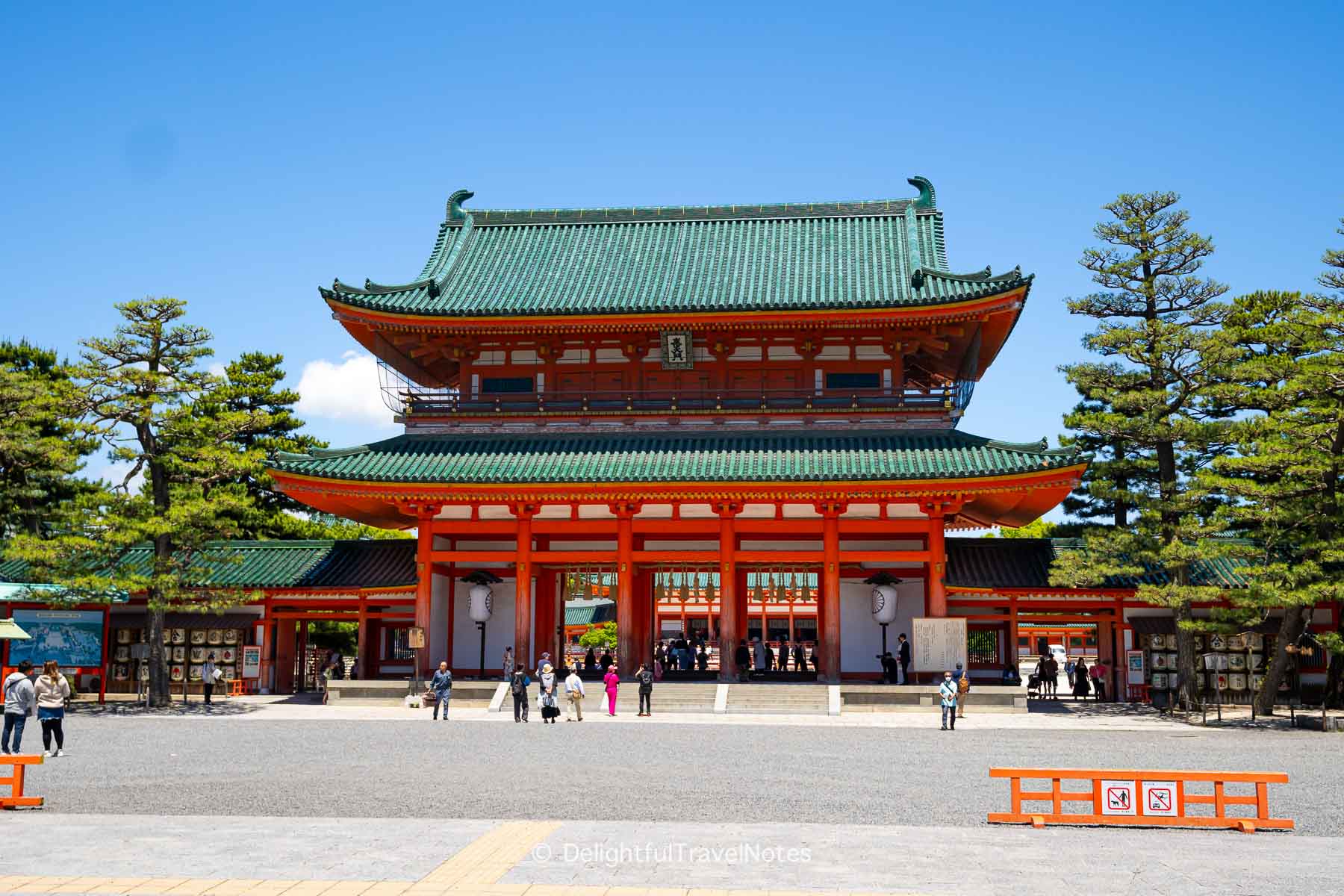
If you are interested in Japanese gardens, I highly recommend this Zen Garden Walking Tour with Andrew, a garden designer living in Kyoto. He will break down foundational Zen principles and Japanese garden design concepts to you and show you how to view and appreciate some of the best gardens in Kyoto. It is among the best guided tours we have taken in Japan.
Plan a Mix of Activities
Temples and shrines are undoubtedly the highlights of Kyoto but planning a mix of activities beyond those landmarks will balance your itinerary. Decide what to do based what you enjoy. There are many advices and itineraries online, but you are the one who understand your interests the most. Here are some ideas:
- Visit local museums, such as the Kyoto Railway Museum.
- Take the Sagano Romantic Train, especially in the fall and spring.
- Rent a kimono to dress up and take photos.
- Rent a bicycle and explore Kyoto yourself or take a guided Kyoto cycling tour.
- Watch cultural performances at local theaters, such as GEAR Non-verbal Theater, Minimiza Theater or Gion Kobu Kaburenjo.
- Go hiking in the northern part of Kyoto (Mount Kurama area).
- A lot of online guides recommend tea ceremony but we didn’t enjoy ours. Here’s the review of our Kyoto tea ceremony session.

If you are a food lover, be sure to allocate time for exploring Kyoto cuisine. Kyoto cuisine is very distinct, characterized by its light flavors and emphasis on seasonal ingredients and meticulous preparation. Learn more about the local foods of Kyoto you shouldn’t miss here.
Check Opening and Closing Hours of Attractions
Most attractions in Kyoto close quite early, often around 4-5 pm. Some places tend to close their gates to new visitors before the official closing time. For instance, Nijo Castle is listed on Google as being open until 5 pm, but they stop admitting visitors at 4 pm. Ninomaru Palace won’t let people in after 4-4:10 pm. We learned this the hard way!
Generally, it is better to always double-check the official websites of the attractions for the most accurate and up-to-date information on opening hours and last admission times. That way, you can avoid arriving after the cut-off time and feeling disappointed that you couldn’t make it or could have gone somewhere else.
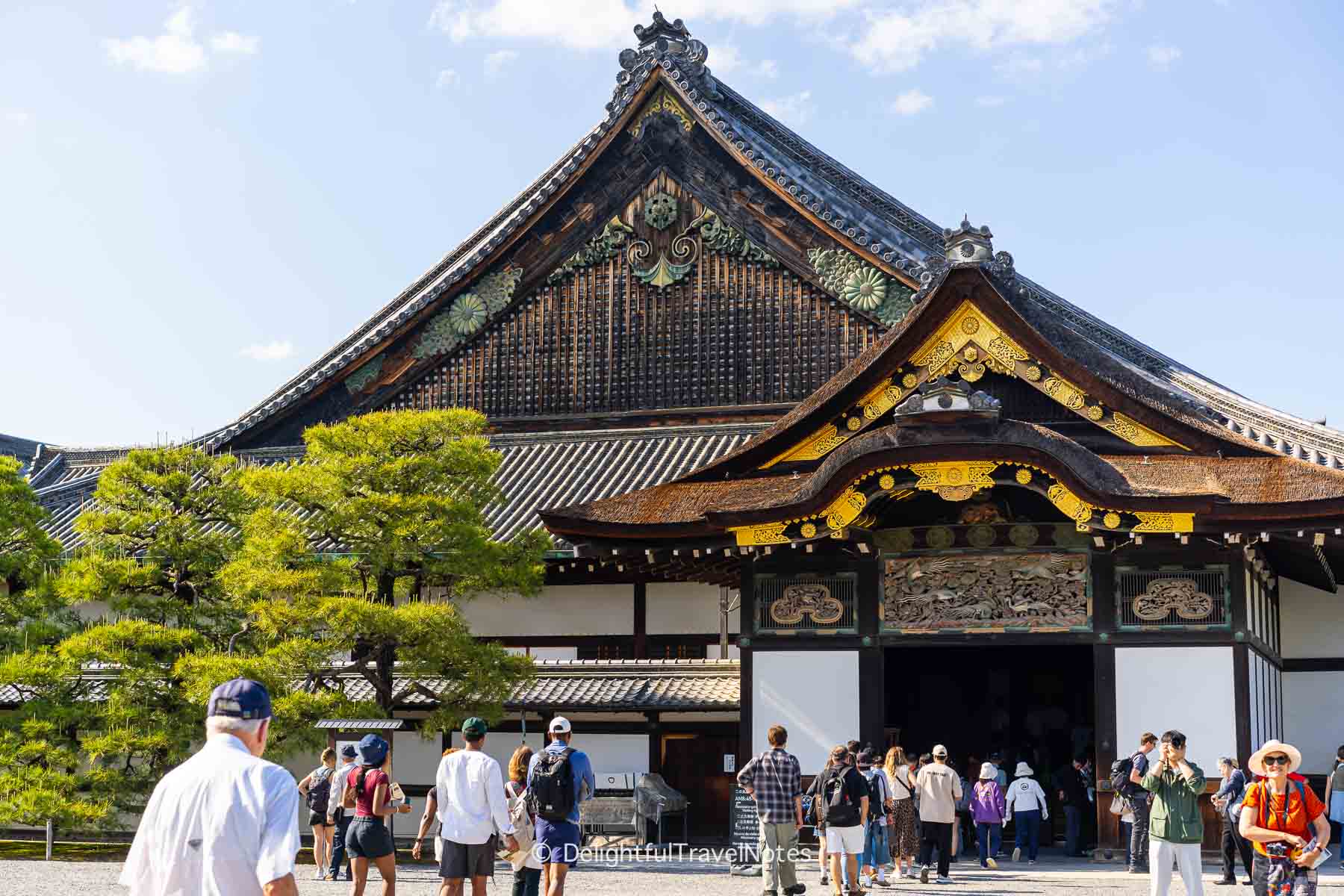
Make Some Dinner Reservations
It is not a must to make dinner reservations, but if you have specific restaurants in mind, especially famous places or fine dining establishments, a reservation is highly recommended. Some restaurants may require reservations weeks or even months in advance. Here’s the list of the best ways to make restaurant reservations in Japan.
Also, if you come to Kyoto during busy seasons or weekends, it’s definitely better to have dinner arrangements. But at the end of the day, don’t stress out too much. In the worst case, you can always grab something from the large food options at depachika (department store basement food halls). Some depachika we often visit are the one in Takashimaya and the one in Isetan at Kyoto Station.
Consider Taking Day Trips
I always feel like there’s never enough time to explore Kyoto, but at the same time, I think it’s fun to take day trips too. They add a refreshing change of scenery and atmosphere to the trip, so we’re still making the most out of our time in Kyoto. The great thing about taking day trips is no need to switch hotels or deal with the logistics of moving luggage, and you can stay flexible and change plans depending on the weather or your mood each day.
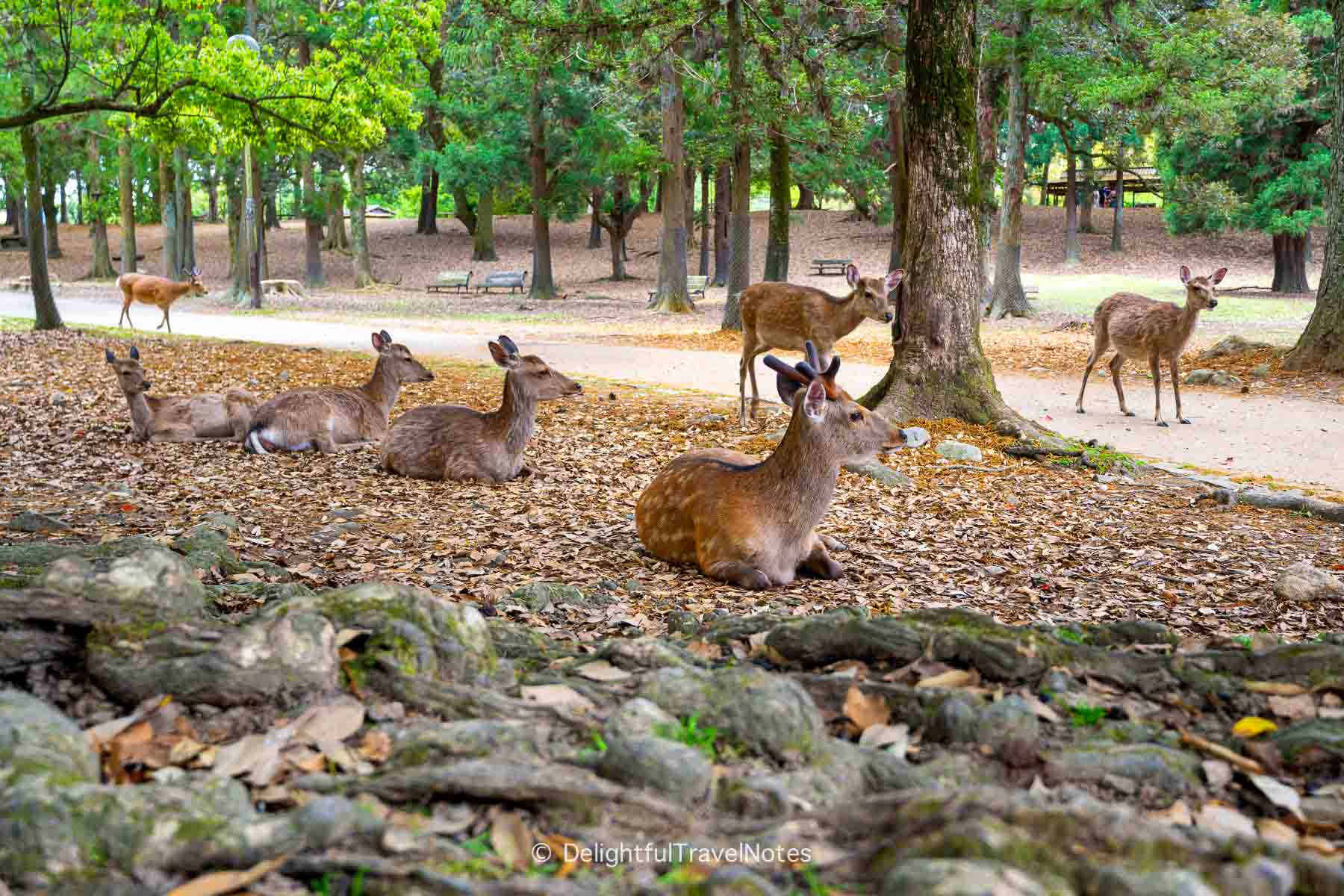
Popular day-trip destinations are Uji, Nara and Osaka. I enjoy staying overnight in Nara and Osaka, but you can easily go there as day trips by taking a short train ride. You can even venture further to Kobe or Himeji. Lesser-known day trips are Hikone and Shiga, for example. But this advice about considering day trips should be taken with the principles of planning your trip as if you would come back and avoiding an overstuffed itinerary in mind.
Read more: How to visit Himeji and Kobe in a single day trip from Kyoto.
Understand Public Transportation System Isn’t the Most Convenient
When planning your trip to Kyoto, you should know that the city’s public transportation system, while functional, isn’t as extensive and well-connected as those in Tokyo or Osaka. I feel like a lot of first-timers aren’t fully aware of this.
Kyoto’s train system, though efficient, doesn’t cover the entire city comprehensively. The city is served by several different train lines, including JR lines, private railways, and the subway. However, many of the major tourist attractions are not directly accessible by train. The bus system in Kyoto is usually overloaded to the extent that many locals are unhappy and have to complain to the city.
This will lead to my next point about considering the location of your accommodation in relation to public transportation hubs. Also, using taxis strategically can be a highly effective solution. While taxis are more expensive than public transportation, they can be a huge time-saving when reaching places that are less accessible by public transport.
By using a combination of trains, taxis, and walking, you can navigate the city more effectively. And taxis aren’t that expensive when using strategically, the usual rate we’ve seen is 500-600 yen per km. Some people also enjoy renting bicycles to get around Kyoto.
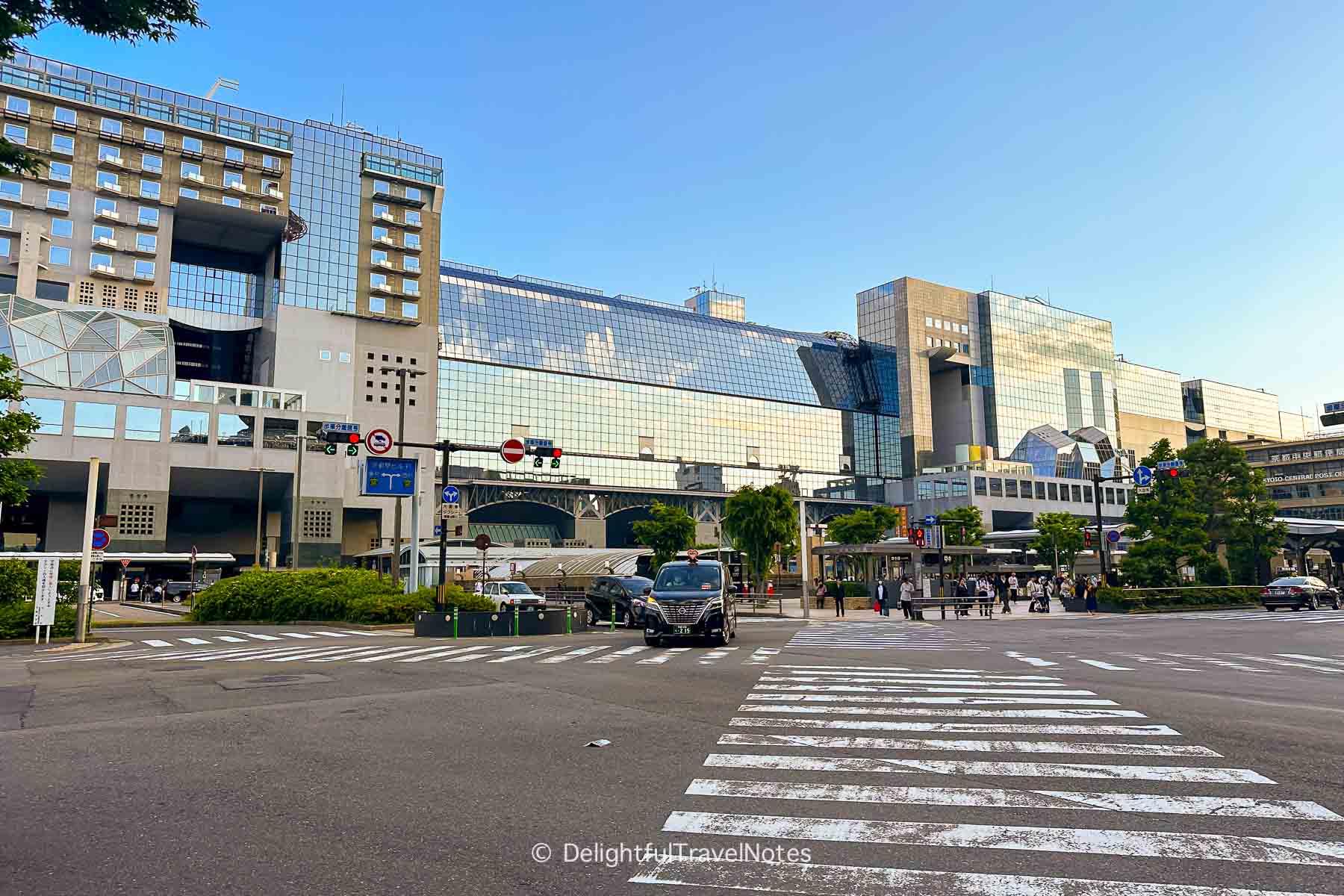
Pick Hotel Location Wisely Especially If Relying on Public Transportation
The distribution of attractions in Kyoto mean that hotels with convenient locations can save you significant time and hassle. When choosing your accommodation, consider how you plan to spend your days in Kyoto.
If you plan to spend most of your time exploring specific districts/areas, it is fine to stay within those areas for an immersive atmosphere. For our first trip, besides one of the day to visit Arashiyama, the rest was for seeing places in Gion so we chose The Celestine Hotel Gion at the corner of Gion. We didn’t use the train at all on that trip.
If you plan to make multiple day trips, one of the best areas to stay would be near Kyoto Station. Kyoto Station is served by numerous JR lines, including the Shinkansen (bullet train). The station also has a major bus terminal, providing easy access to many attractions. For our second trip, we did some day trips so we stayed at The Thousand Kyoto, which is a 2 minute walk from Kyoto Station.
In case you are visiting Kyoto to see fall colors, I recommend staying in eastern Higashiyama as there are many beautiful fall foliage spots in this area. My favorite hotel in this part of Kyoto is The Westin Miyako Kyoto.
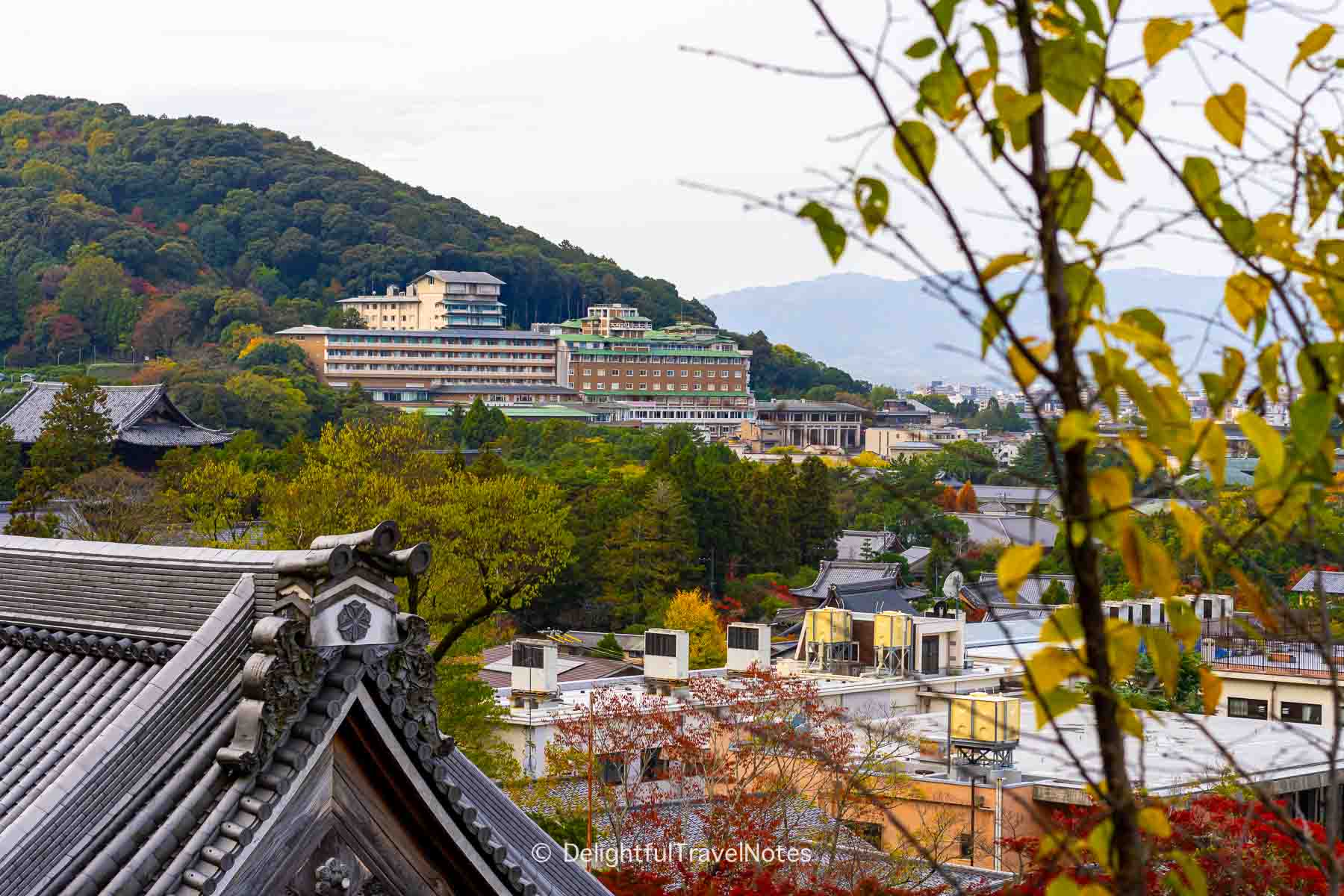
If you prefer a more central location within the city, look at areas around Karasuma, Shijo-Kawaramachi, or Sanjo stations. These areas provide easy access to the subway and local train lines like the Hankyu or Keihan. Staying in these areas also places you close to a lot of sites, as well as shopping and dining options.
Further Read
Besides all the above tips specific to visiting Kyoto, you can find other general Japan travel tips here which are also very relevant. We hope you will enjoy Kyoto as much as we do.
Additional guides you may want to read:
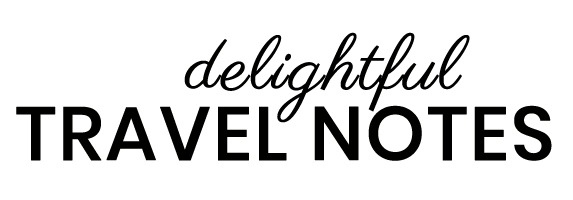
Explore More
The Thousand Kyoto Review: Wonderful Hotel Right Next To Kyoto Station
Top Crowded Attractions in Kyoto and How to Avoid the Masses
Nanzen-ji Fall Colors and Walking Route